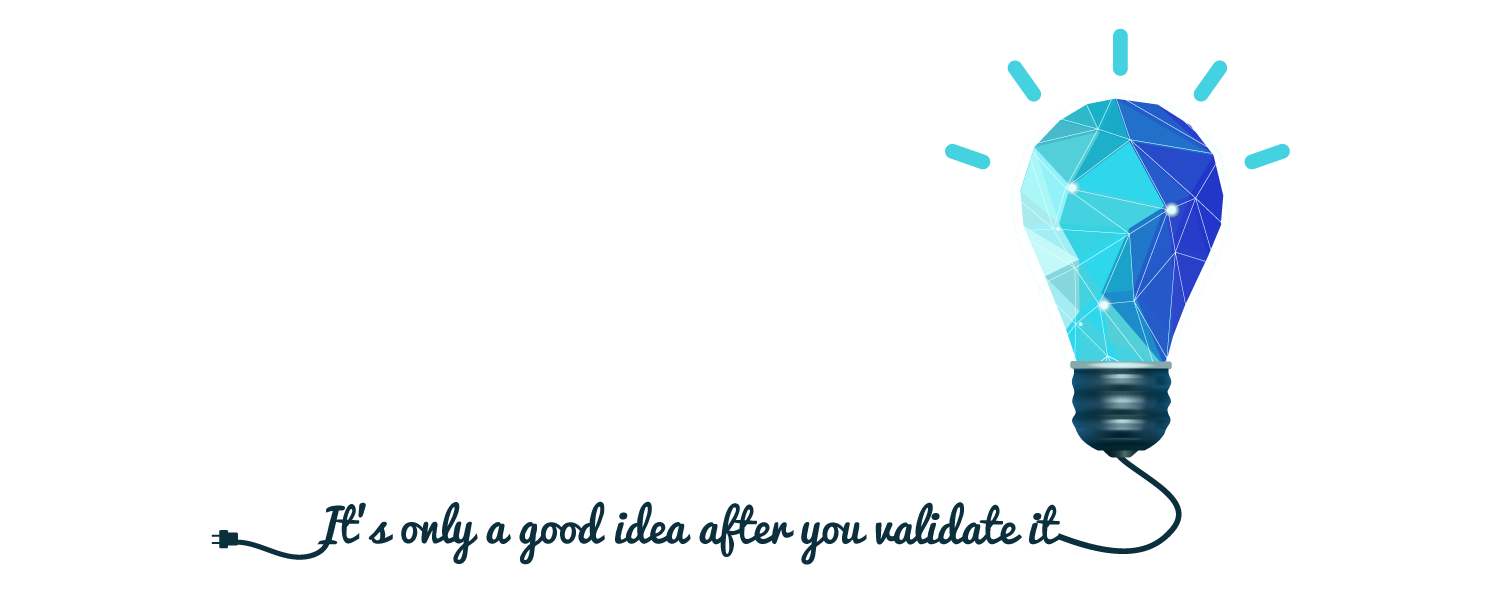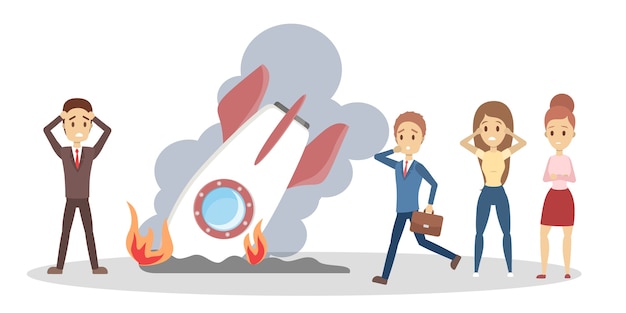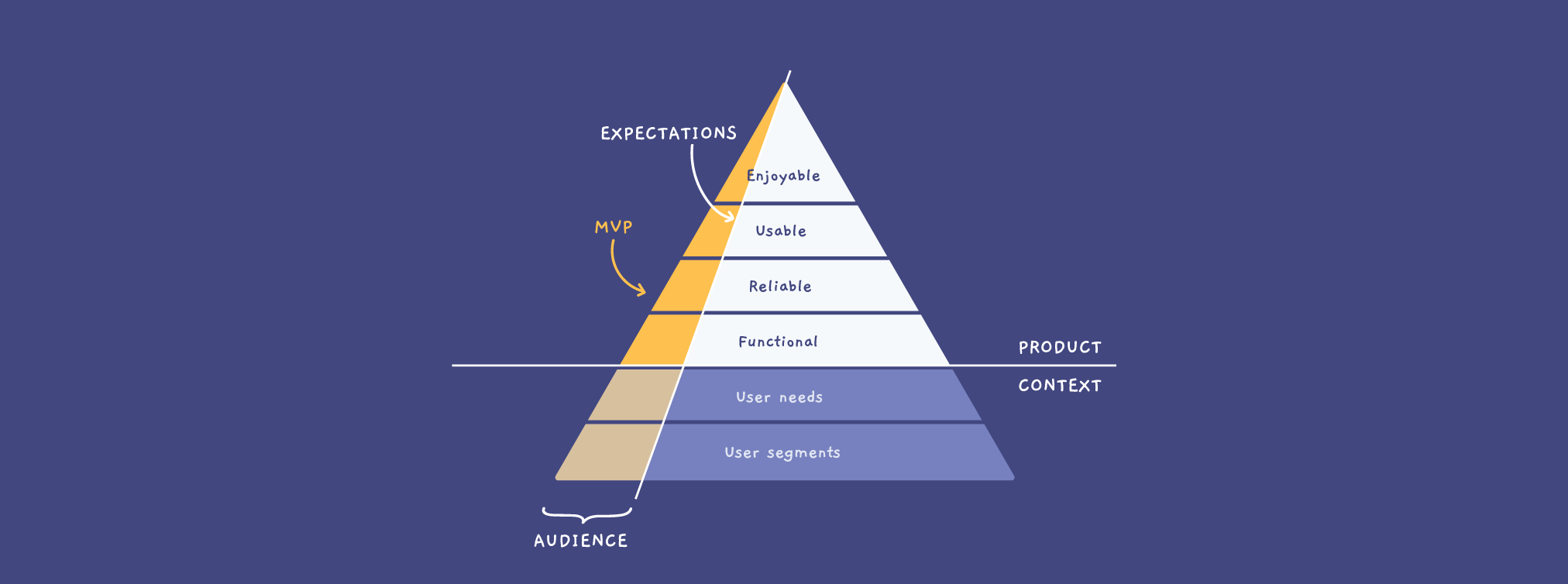S
T
A
R
T
U
P
C
A
By Nida Fatima.
30 September 2020

· Setting up a business model canvas
· Creation of the MVP
· Proof of principle, sir.

Attractive user interface design, high usability, and excellent quality won't help because nobody wants to use the application which does nothing. Oh yes and a word on the competition: just 2 percent of the top 250 iPhone app publishers in the US. According to analysis company Distimo, the App Store is newcomers. Validation is important. Without this, you won't know whether customers pay or not for your product. Your concept for an app can be very impressive, but you should first prove it. How? Create and test a design-oriented Minimum Viable Product (MVP) in the market. Engineers are really enthusiastic about the product and are the "first" way of thinking. But there is also the business end, which you must master before you create something.

An approach guided by design is so powerful because it's simple. And if you can't use Photoshop, it won't take long to learn how to draw some static user interfaces. After all, in the App Store and Play Store, you have hundreds of applications to inspire you. This will help confirm the idea of the app a lot. A number of static screens in the user interface indicate the features of the app are idea validation to check whether or not customers like it. They allow your customers to analyze your application and determine if it solves their problem.



Several fundamental screens are necessary for customers to understand and buy (if good) into the idea of your app. The difference between you and the person in the street that has a brilliant idea is: you can finish it if you are committed and love your idea. Most people never perform their ideas because they never perform. Make sure your app concept is feasible and sealable and invest in it only then to hire an agency or a freelancer to create, test and market your product.
App Idea Validation and Save it from Failure
But you're ready to make your vision of a major mobile app a reality. You know, it's going to add lots of value to your customers. But let's face it: the idea is zero without proper idea validation and execution. Is there really a need to test the app idea? Yes, if you want to stop wasting your time and money. But here's how to do the right thing.
So, what’s This App Idea Validation Thing?
Are you totally confident about your app which is going to solve a particular problem? To validate your application idea, you need to invest some time upfront to ensure that your idea is really something people want and are willing to pay for.Is the App Idea Validation Necessary?
Absolutely Don't get over-excited – proposals are literally worth none. There are so many of them in a society where ideas are overrated. The misconception that ideas have merit also results in thousands of dollars and months of work spent in vain. It doesn't really matter how brilliant you think your app concept is because what matters is what your customers think. You can be sure your app idea is terrific, but note it's just a concept. It's nothing before you start making money from it and, without idea validation, there's a strong risk that you won't monetize the idea at all. It's that simple: your customers, not you, are buying your stuff.
Business Tools for App Idea Validation
Free and paid resources are available to verify app and business ideas. The technique is pretty basic – you're building a landing page (more on that later) and driving targeted traffic to it with advertisements. Then you calculate the effect, evaluate, optimize and draw conclusions as to whether you should optimize and proceed, or whether it's time to move on and try something fresh. In fact, all this boils down to three points:· Setting up a business model canvas
· Creation of the MVP
· Proof of principle, sir.
No Validation Means Failure?
Fact: about 60 percent of applications are not profitable enough to pay for development costs. Over 70% of developers claim that even their best applications failed to raise more than $5,000. Why? Is there a lack of promotion, a poor UI / UX design, or a low quality? Yeah, there can be something. Quite definitely, though, there is a lack of proper idea validation in the first place. Would-be developers are frequently overly and wrongly told that their app would be useful to their clients. Apples and oranges are the true thinking and the only proof of progress. As in every other product or service, the application should address the problems and pains of your customers. Will it make the users happier? If not – it's going to fail.
Attractive user interface design, high usability, and excellent quality won't help because nobody wants to use the application which does nothing. Oh yes and a word on the competition: just 2 percent of the top 250 iPhone app publishers in the US. According to analysis company Distimo, the App Store is newcomers. Validation is important. Without this, you won't know whether customers pay or not for your product. Your concept for an app can be very impressive, but you should first prove it. How? Create and test a design-oriented Minimum Viable Product (MVP) in the market. Engineers are really enthusiastic about the product and are the "first" way of thinking. But there is also the business end, which you must master before you create something.
What Is an MVP and How to Use It?
Minimum Viable Product(MVP)is simply a condensed version of a product with functionality enough to illustrate the product, attract users, and obtain feedback. It's the easiest way to find out whether or not consumers want your mobile app. You may ask prospective customers if you wish to confirm your app concept. However, it is almost never successful – the concept is not a real product and it is difficult for consumers to get it. There is a better way to advertise the product as a Minimum Viable Product (MVP) and see the responses and experiences of customers.How to build an MVP (minimum viable product)?
Spoiler Alert: Minimum Viable Product(MVP)is not a complete program or version of it that is scaled-down.Using Design in App Idea Validation
Design is always critical when it comes to app development. However, UI and UX architecture is at the very heart of the application idea validation level. It is what separates success from failure. In reality, we defined a case in which UI / UX design modifications alone boosted E-Commerce sales by 20%. For an obvious cause, the design is vital to your Minimum Viable Product(MVP): it lets you 'create' the application without having to construct it. Don't start coding – fire Photoshop or Illustrator and draw your application quest. Don't waste time and resources designing the app before demonstrating with the design-oriented Minimum Viable Product(MVP)that the vision of the app pays for itself.
An approach guided by design is so powerful because it's simple. And if you can't use Photoshop, it won't take long to learn how to draw some static user interfaces. After all, in the App Store and Play Store, you have hundreds of applications to inspire you. This will help confirm the idea of the app a lot. A number of static screens in the user interface indicate the features of the app are idea validation to check whether or not customers like it. They allow your customers to analyze your application and determine if it solves their problem.
1. Bring your app idea to paper.
To this end, you can draw a mind map, make some drawings, write some phrases for the pitch in the lift, etc. Your aim is to switch between the big picture and more 'tangible' photos. Sketches are perfect for idea validation of early app concepts.
2. Get some feedback from your friends and colleagues.
They can advise you on how not to break the laws of interface design. At this point, you don't have to stand out too much – just learn what popular applications in your niche do. If your concept for an app is fine, you can pay a skilled designer later to add originality.
3. Use all the info you’ve collected to draw your app screens
Share your idea and it's refined when you do that. You can get feedback immediately – direct, easy feedback. Particularly from complete strangers who say, 'this is a dumb idea' or 'this is a brilliant idea, but did you think? Using all the knowledge you have obtained to draw your software screens. In Photoshop or any other tool, you can use it. It's all right if you can't do it comfortably and efficiently. It's a known fact that you can pay the price if you want to get something big. Try it again, and you're going to handle it. When you are ready for your concept Minimum Viable Product (MVP), build a landing page, and sell your app. Not email registrations, but actual transactions. Mega feedback Do customers purchase your product? If yes – fine, you can now recruit experts, developers and marketers to win the market. Harmful feedback No interest? Don't you get dirty? Well, that means that you can change your app design or develop the whole idea somewhat. Or, maybe, remove the entire thing. You will save time and money by taking the app to the market without validating it.Bottom Line
While it looks like a tough challenge, it is very easy to validate the definition of a mobile application even if you cannot code. All you need is to design a range of Minimum Viable Product(MVP)screens and then test them on the market. Coding can be more a hassle than a real aid at the application validation stage. Don't waste valuable time and money on it; concentrate instead on improving your Minimum Viable Product(MVP).
Several fundamental screens are necessary for customers to understand and buy (if good) into the idea of your app. The difference between you and the person in the street that has a brilliant idea is: you can finish it if you are committed and love your idea. Most people never perform their ideas because they never perform. Make sure your app concept is feasible and sealable and invest in it only then to hire an agency or a freelancer to create, test and market your product.
